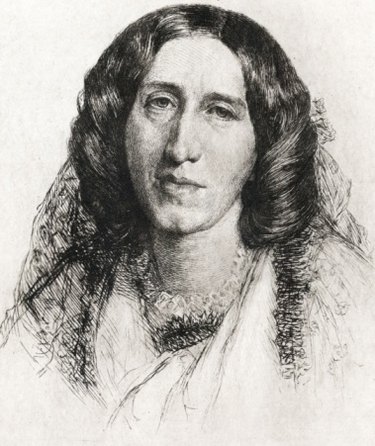
There are distinct differences between etching and print. Both can be used in the production of art as they transcribe patterns or images, from one source to another. Etching has largely remained in the field of art and is not as widely used outside it unlike print. While still a form of art, print and printing is used to transcribe information and used in everyday life.
Etching
Video of the Day
Etching, according to the Merriam-Webster Dictionary is "the art of producing pictures or designs by printing from an etched metal plate." The verb, etch, is defined as producing a design or pattern "on a hard material by eating into the material's surface (as by acid or laser beam)." Originally the artist drew an image into a wax ground with an etching needle. The untouched wax ground protected the metal from the acid baths, and the unprotected surface was eroded by the acid. Etching is often confused with engraving, which requires the artist to cut into the material using a sharp tool.
Video of the Day
The Merriam-Webster Dictionary defines print in a number of ways. The word as a noun can refer to "a mark made by pressure" like a dog's paw-print or the printed letters found in a text like a book. Other definitions include "a photographic or motion-picture copy" or "cloth with a pattern or figured design applied by printing." As a verb, it means to stamp or "impress something in or on" something else which leaves a mark.
Print in Art
A print is also defined as a form of art. The Merriam-Webster Dictionary states that a print is "an original work of art intended for graphic reproduction and produced by or under the supervision of the artist who designed it." Paper, canvas, fabric and wood can be used as flat surfaces upon which the image or design is printed. Prints can easily be reproduced by re-inking the printing block or plate.
Difference Between Etching and Print
Etching includes the act of printing. Once a metal plate has been etched, the wax ground is removed and its surface is covered in ink. The unetched surfaces are wiped clean and an impression is printed onto a flat surface, usually paper. All etchings are a form of print, though not all prints are a form of etching, as they include works completed with the use of woodcuts, lithograph, transfer paper and printing presses. A print is the final product, while etching is the entire process by which the etching print is produced.